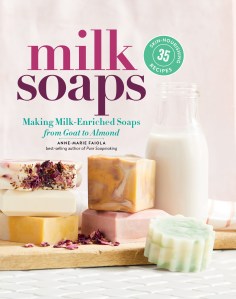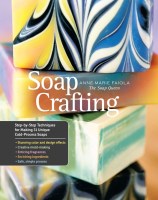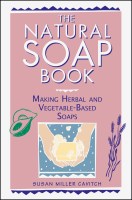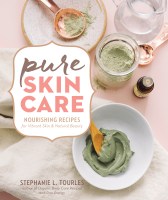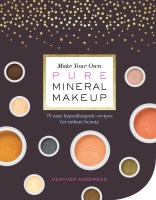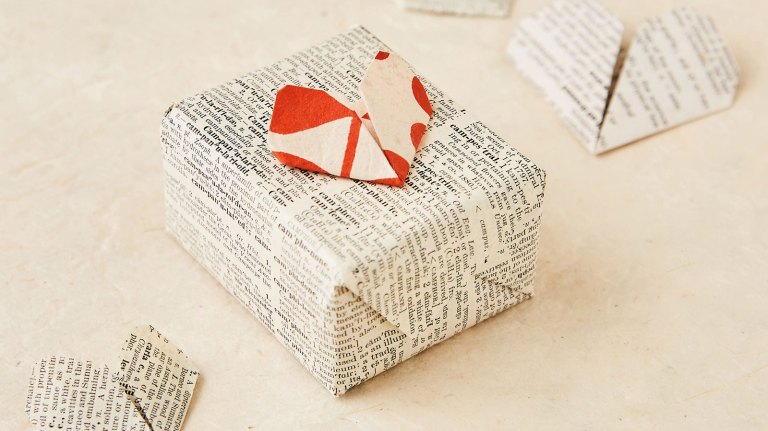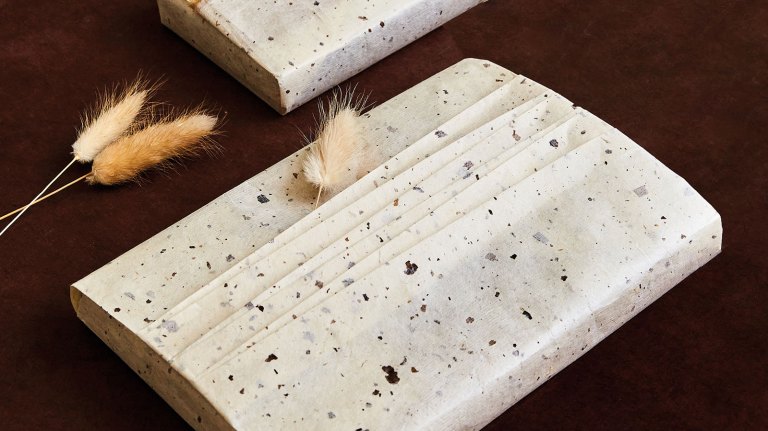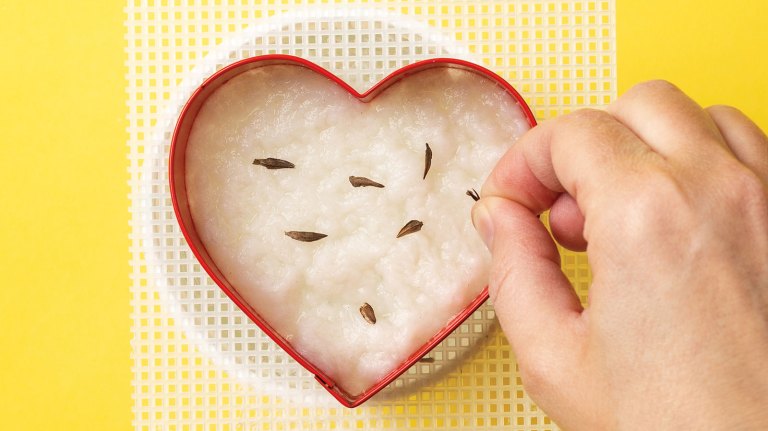Make Calendula-Infused Buttermilk Soap Bars
Try your hand at the science of soapmaking and create a beautiful bar that you and your skin will love.
The art of soapmaking, much like baking, is a creative process that relies on pure chemistry for success. At its simplest, the chemical formula is lye + oil = soap. But the lye needs a carrier in order to mix with the oil, so the formula is actually (lye + carrier liquid) + oil = soap. This recipe uses buttermilk combined with water as the carrier liquid.
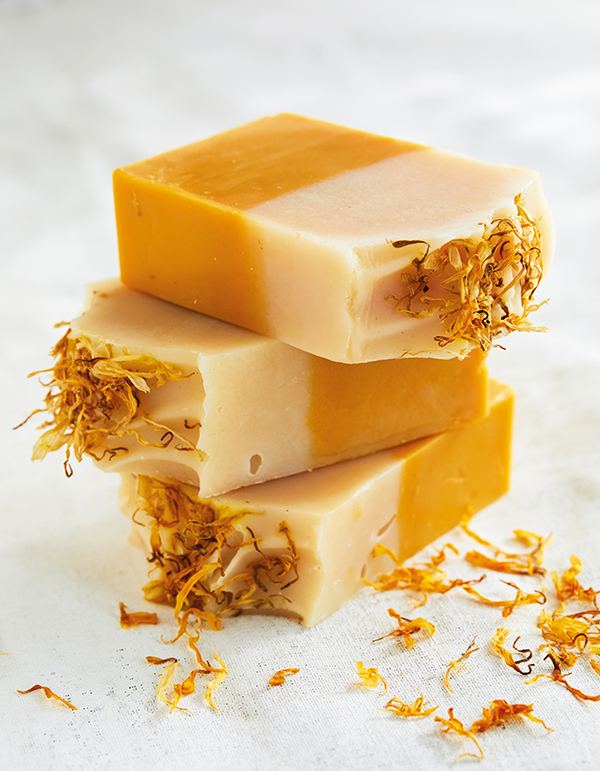
Making soap with milk is a bit more complicated than making soap with water, so it’s a good idea to be familiar with the basics of soapmaking before you take on this project (If you are just getting started, I cover everything you need to know in Milk Soaps: Making Milk-Enriched Soaps from Goat to Almond).
So why even bother making milk soaps? Well, it’s kind of like drinking hot chocolate made with milk instead of hot chocolate made with water. Milk soap is creamier and more luscious with a silkier, finer foam than soap made with water.
This all-natural buttermilk soap recipe is packed with skin-loving calendula as an extract and an oil infusion and sprinkled with petals for added exfoliating power. Kokum butter and palm kernel flakes thicken the batter for flat layering and top texturing. Homemade buttermilk is best; if you buy it, use a brand with as few additives as possible.
The recipe is formulated using sunflower oil to infuse the calendula; using a commercial calendula-infused oil will change the results. If you do use a commercial product, run the ingredients list through a lye calculator to make sure it will work.
Lastly, this essential oil produces a softly fragranced soap; for a stronger scent, substitute the same amount of Pink Grapefruit fragrance oil (fragrance oils are synthetic blends of aroma chemicals and essential oils while essential oils are organic compounds extracted from plants). These bars go in the freezer overnight to prevent overheating, as half of the water in this recipe is replaced with buttermilk (50% added at trace). This recipe makes approximately 10 soap bars.
Tools:
- Tall 12-inch (30.5 cm) silicone loaf mold
- Easy-pour container
- Double boiler (or a small pot nested in a larger one)
Ingredients:
Oil Amounts
- 8.7 ounces/247 g coconut oil (25%)
- 8.7 ounces/247 g palm oil (25%)
- 5.2 ounces/147 g pure olive oil (15%)
- 3.5 ounces/99 g kokum butter (10%)
- 3.5 ounces/99 g palm kernel flakes (10%)
- 3.5 ounces/99 g calendula-infused sunflower seed oil (10%)
- 1.7 ounces/48 g castor oil (5%)
Lye-Water
- 5.7 ounces/162 g distilled water
- 5 ounces/142 g lye (5% superfat)
- 3 teaspoons/15 mL sodium lactate
Essential Oil
- 2.5 ounces/71 g grapefruit
Colorant
- 1 teaspoon/5 mL yellow oxide dispersed into 1 tablespoon/15 mL sunflower seed oil
Additives
- 5.7 ounces/162 g buttermilk
- 4 tablespoons/60 mL dried calendula petals, divided
- 1.5 ounces/43 g calendula extract
Directions
Prepare Ahead
To make the calendula-infused oil, put 2 tablespoons of the calendula petals in the double boiler. Pour 4 ounces (113 g) of sunflower seed oil on top of the petals. (You need to infuse a little extra oil, as some is absorbed.) Heat on medium-low for 4 to 6 hours, stirring occasionally. Remove from the heat, let cool, and strain out the petals.
Measure out the buttermilk and bring to room temperature.
Make the Soap Batter
- Melt the palm oil in its original container, mix it thoroughly, and measure it into a heatproof bowl large enough to hold the entire recipe. Melt and measure the coconut oil and add it to the bowl. Add the kokum butter and palm kernel flakes to the hot oils and stir until melted. If needed, microwave the bowl in 10-second bursts to melt the butter completely. Add the olive oil, infused sunflower seed oil, and castor oil and set the bowl aside.
- Measure the distilled water and the lye into separate heatproof containers. Add the lye to the water a tablespoon (15 mL) at a time (never add the liquid to the lye). Stir continuously until the lye fully dissolves and the water becomes clear. Stir the sodium lactate into the lye-water.
- When the oils and the lye-water have cooled to about 105°F (40.5°C), add the lye-water to the oils, pouring it over the shaft of the stick blender to minimize air bubbles.
- Insert the stick blender into the batter, tilting it so that any trapped air can escape. Do not turn on the stick blender until the blades are fully immersed. Alternate pulsing and stirring with the stick blender until a thin trace is achieved.
- Add the buttermilk, grapefruit essential oil, and calendula extract. Stick-blend until combined and you achieve a medium/thin trace.
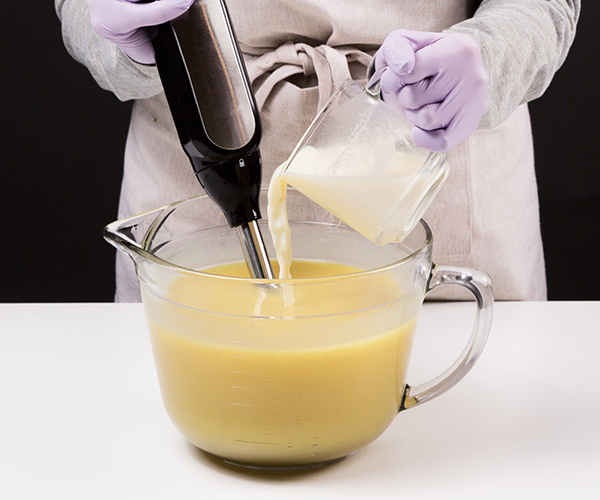
Color and Pour
- Pour half the batter (about 26 ounces/ 737 g) into an easy-pour container and set aside.
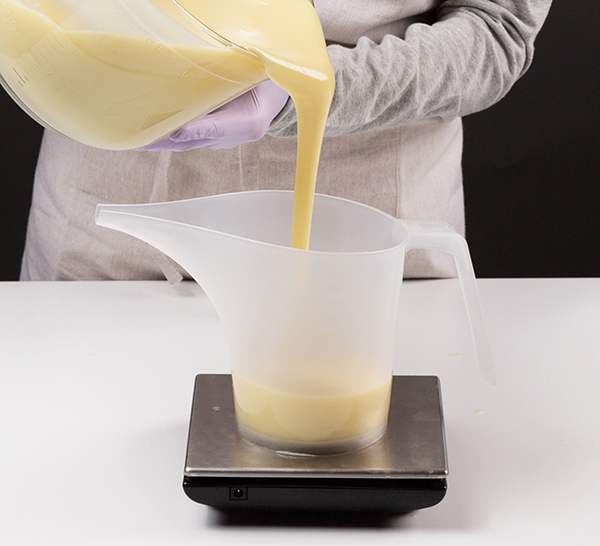
- Add 1 teaspoon (5 mL) of dispersed yellow oxide to the remaining batter and mix it in with a spatula.
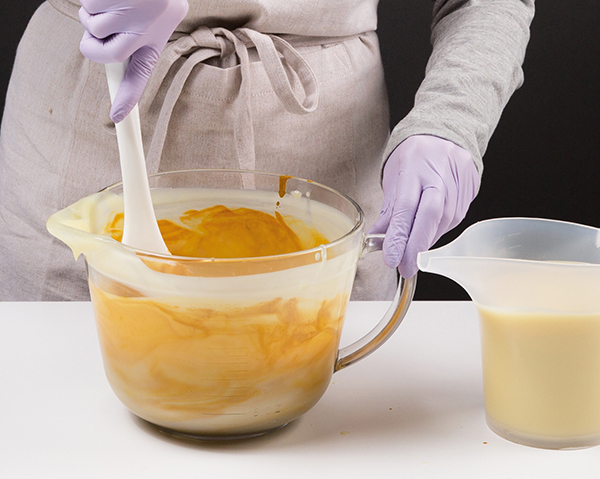
- Once the color is fully mixed in and the batter is thick enough to support layers, pour the yellow batter into the mold.
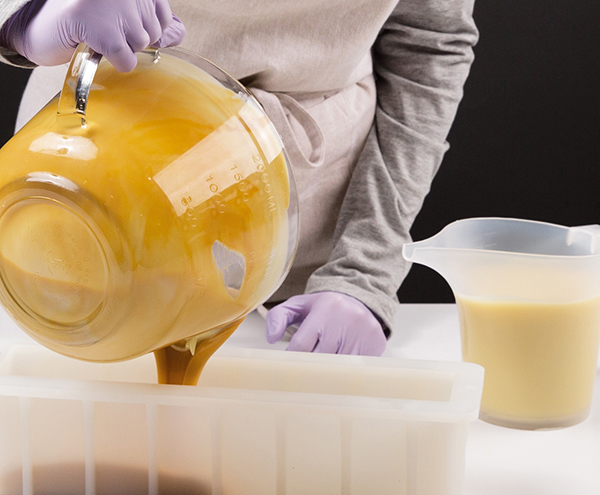
- If your white batter is too thin, stick-blend a bit more to achieve a medium trace. Gently pour or spoon the plain batter on top of the yellow. Work low and slow, being careful to create layers without breaking through.
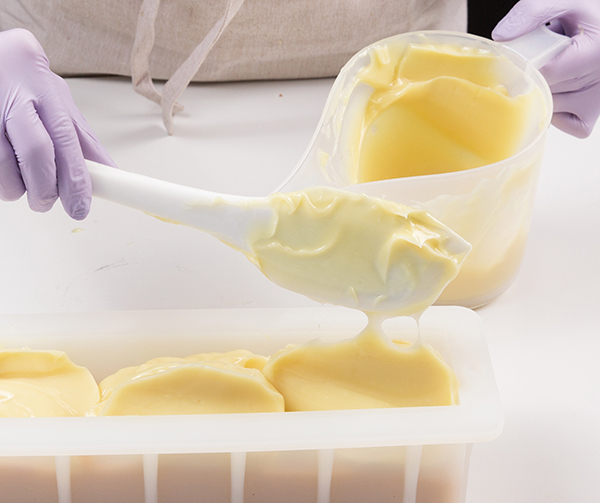
- Texture the top with a spoon by pushing the batter up from the longer sides toward the center to create a peak down the center of the loaf.
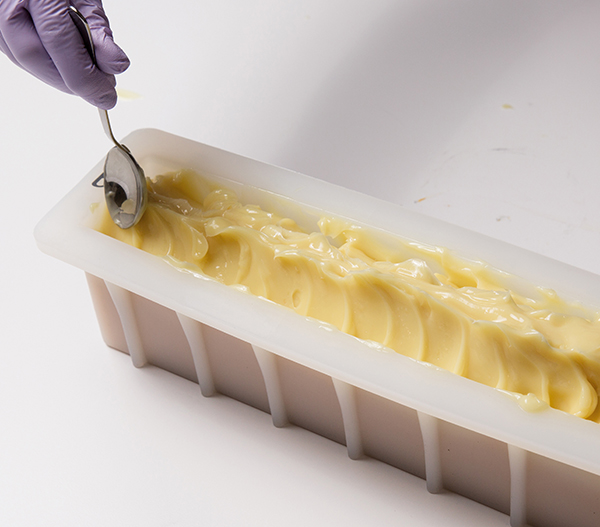
- Run the back of the spoon down the center of the peak to flatten it out.
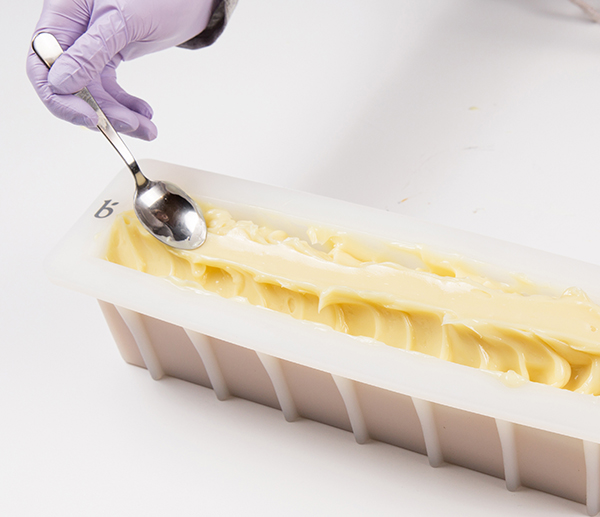
- Sprinkle the remaining calendula petals down the center of the mold, where the soap is highest. Press very slightly with a gloved finger to help it stick without damaging the texture.
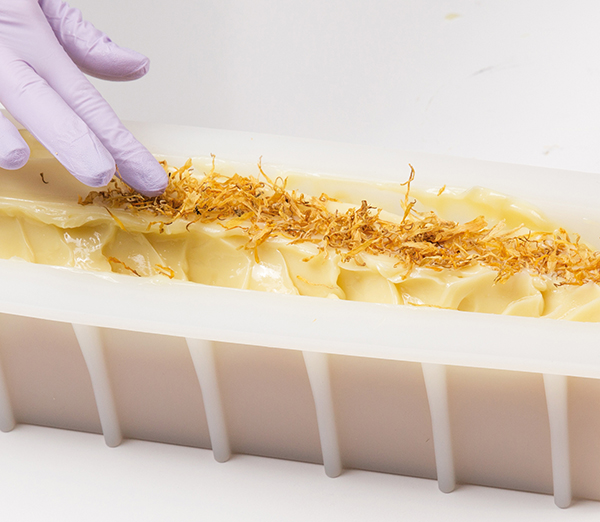
- Spray thoroughly with 99% rubbing alcohol to prevent soda ash.
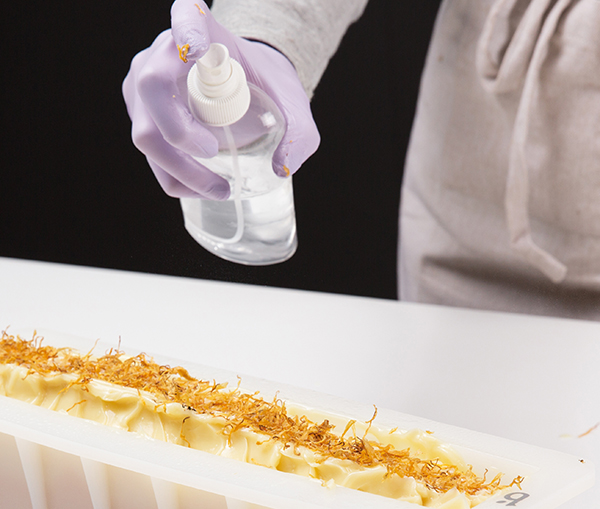
- Buttermilk will heat up and partially gel if left at room temperature. Avoid this by placing the soap in the freezer overnight. Remove from the freezer and wait at least 48 hours to unmold. Frozen soaps tend to soften quite a bit as they thaw and need time to harden again.
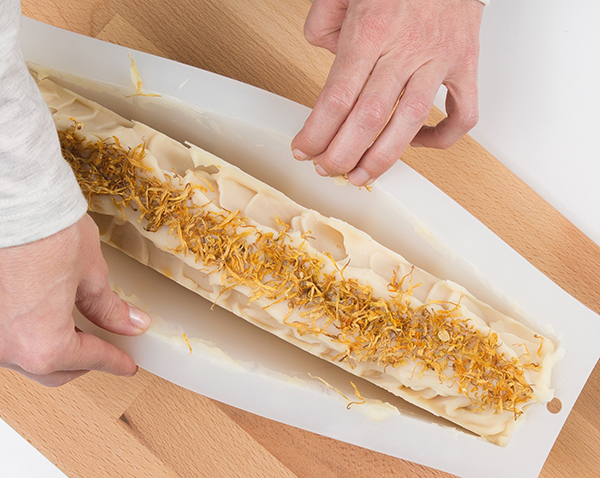
- To slice the bars, lay the loaf on its side and cut with a knife. This prevents the herbs from being pulled through the soap and leaving drag marks. It also keeps the textured top from being damaged while cutting.
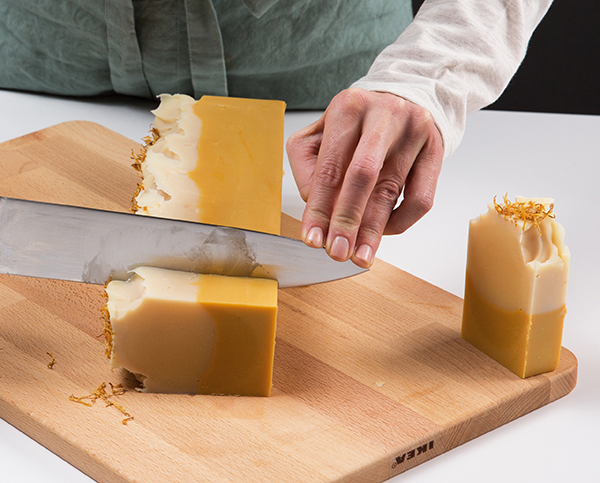
Let the bars cure in a well-ventilated area for 4 to 6 weeks before using, turning them every few days to ensure they cure evenly.
Excerpted and adapted from Milk Soaps © Anne-Marie Faiola.
